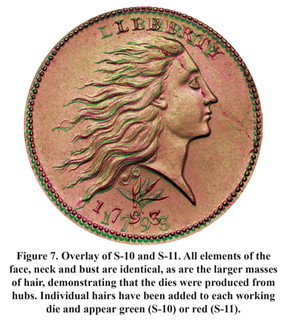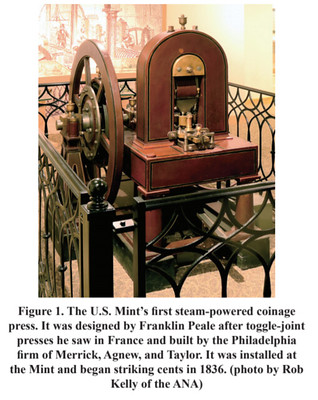
PREV ARTICLE
NEXT ARTICLE
FULL ISSUE
PREV FULL ISSUE
THE COINS TELL THEIR STORY BESTIn the April 2020 issue of Penny-Wise, the official publication of the Early American Coppers club (EAC), Bill Eckberg published an article titled "The Coins Tell Their Story Best". With permission, here's an excerpt. -Editor How do we do research into old coins? In general, we look at the artifacts left behind by history – in this case by the mints – with a critical eye as a way to understand what went on: the who, what, where, when and how of the coins we love and collect. There are many sources of information that can be useful in this research. They are broadly considered primary and secondary sources. Primary sources are closest to the origin and so are considered the most reliable sources of information Secondary sources
Though it may seem counterintuitive, official government reports, such as the annual reports of directors of the Mint, are also secondary sources. They are summaries of what happened. But mints are both factories and government bureaucracies, and official reports are frequently written in such a way as to promote the point of view that the writer wants to present. The information in such reports is not necessarily wrong, just not necessarily the whole truth; it is often possible to shade a technical truth to give a very false impression. It’s what we, today, call “spin doctoring.” An interesting example of this would be Robert Scot’s letter to Congress describing the creation of cent dies. One might think it a primary source, since Scot was the man who made the dies, but his description of how he claimed to do it does not square with the evidence from the coins themselves, as we shall see. Secondary sources can still be quite useful, but it is very important to keep a healthy skepticism about everything we read in such sources. Primary sources
A third kind of primary source would include internal documents recording the movement of materials within the mint. It was essential that the Treasurer, Assayer/Refiner and Chief Coiner keep careful records of the movement of gold, silver and copper between them. Each was responsible to account for all of the metal that he received, and he had strict rules about what he was allowed to do with it and how and when to do it. That is why each officer with a responsibility for coinage metals had to post a bond equal to several years’ salary before he could handle gold or silver. The coins are the most reliable primary sources. They can’t lie or shade the truth about themselves; they can only stand as mute relics of their time. If we study them, we can learn much about what they were made of, how they were made, etc. One way to do this is to compare different coins’ many physical characteristics. That can sometimes identify if the planchets were from a common source or not. Another is to compare the products of different dies. Recent digital imaging technologies have made this a far easier and more precise way to study coins. For example, digital overlays showed how Henry Voigt used templates to lay out the reverses of the Chain cents.   Coins can tell us more than any other source about how they were made. Though previous authors had supposed that each Wreath and 1793 half cent obverse working die was individually hand-engraved, in fact, all were produced from hubs. The illustrated overlay of the Sheldon-10 and -11 varieties, coined at least ten weeks apart, shows conclusively that the dies were created from the same hub, and that the hub contained the entire face, neck, bust and main masses of hair. The hair received additional engraving in each working die. Figure 8 shows the hair of the two coins with the common features removed, leaving only the individual hairs that are unique to each die. Similar overlays showed that not only were the two 1793 half cent obverses produced from the same hub, but that same hub had actually been created in 1792 for the obverse of the disme pattern! I'm proud of my numismatic library. Some 3,000 volumes, all close at hand, holding scads of great information on U.S. coins, medals, tokens and paper money. But as Bill points out, these are all mostly secondary sources. That's why my favorite parts of most books are the bibliography, footnotes and endnotes. Where is the author getting their information from? If they're not using primary resources and good old fashioned detective work, they may not be adding much value. Remember our profile a couple weeks ago of author and publisher Paul Withers? "Being a numismatic publisher is like being a detective who applies the ABC principle. What's that? Assume Nothing. Believe Nothing. Challenge and check everything. Do that well and the book stands a reasonable chance of being good..." The best numismatic authors are detectives, starting and ending with facts, using careful observation, brainpower and even experimentation in search of the truth (not unlike the team that investigated the Morris 1792 Silver Center Cent - see the article elsewhere in this issue). -Editor To read the earlier E-Sylum article, see:
For more information on Early American Coppers, see:
Wayne Homren, Editor The Numismatic Bibliomania Society is a non-profit organization promoting numismatic literature. See our web site at coinbooks.org. To submit items for publication in The E-Sylum, write to the Editor at this address: whomren@gmail.com To subscribe go to: https://my.binhost.com/lists/listinfo/esylum All Rights Reserved. NBS Home Page Contact the NBS webmaster 
|
